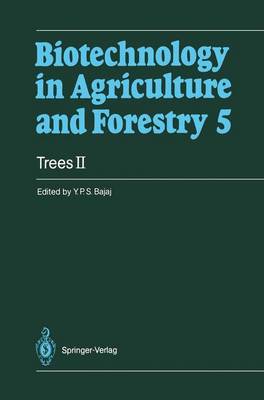'frees contribute a major part of fuel, fodder and fruit, and are an im of bioenergy. They are now needed in large numbers more portant source than ever before for afforestation and social forestry, so that fast-grow ing and multipurpose trees assume great importance. After extensive in discriminate deforestation and rapid depletion of genetic stocks, efforts are now being made to evolve methods for clonal mass propagation of improved and elite trees. Production of short-duration trees with a rapid turnover of biomass, and induction of genetic variability through in vitro manipulation for the production of novel fruit and forest trees, which are high-yielding and resistant to pests and diseases, and trees which display increased photosynthetic efficiency are in demand. These objectives are well within the realm of horticultural and forest biotech nology. Some of the recent advances, such as the regeneration of com plete trees from isolated protoplasts, somatic hybridization, and the Agrobacterium-mediated transformation in various tree species have opened new vistas for the genetic engineering of fruit and forest trees. This book is a continuation of the earlier volume Trees I, and presents 31 chapters on fruit, forest, nut and ornamental trees, such as avocado, pineapple, crabapple, quince, pistachio, walnut, hazelnut, date palm, oil palm, cacao, rubber, maple, sweet-gum, poplars, birches, Chinese tallow, willows, oaks, paper mulberry, rhododendrons, Scots pine, Calabrian pine, Douglas-fir, redwood, ginkgo, cycads and some flowering trees.
- ISBN13 9783540191582
- Publish Date 24 January 1989
- Publish Status Active
- Publish Country DE
- Publisher Springer-Verlag Berlin and Heidelberg GmbH & Co. KG
- Imprint Springer-Verlag Berlin and Heidelberg GmbH & Co. K
- Edition 1989 ed.
- Format Hardcover
- Pages 622
- Language English
